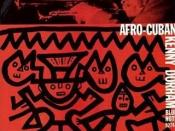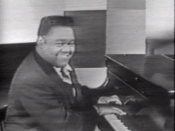Rock Roots: Africa and Cuba
- a synthesis between 2 traditions & 2 continents to form rock
- rock is the unique tribute to the power of integration
- upon closer inspection, rock appears to be a purely African addition
to the western musical institution
- Afro-Cuban + black music of Mississippi and Louisiana share common ancestry:
in the early 19th C. the Haitan revolution sent the islands plantation owners packing.
Many managed to escape with their African slaves , whose origins were primarily
from Yoruba + Fon, modern Nigeria, Congo and Guinea. Most of these slaves
ended up in either Cuba, found in the Oriente province or in the southern United
States, pricipally in LA but also spreading into MS.
- from Africa, these black slaves brought a strong oral music tradition of
storytelling, recreation, work and tragedy.
- used the call-and-response method (eg. Ray Charles' "What'd I Say")
- ask the Cuban's where their music comes from and many point to the mountanous,
jungle-lush Oriente province in the fart south of Cuba - the heartland of where the
islands African religeous + musical survivals are.
- during the 19th C. African rythmic structures filtered out of the Oriente's
countryside into the popular dance halls of its capital, Santiago-de-Cuba. From there
the new music - African polyrythms underlying spanish guitar styles and stanza
forms all using the call-and-response - spread to Havana. This style is called "son".
- when a Cuban is asked if this "son" business was anything like "a-wop-bop-a-lu-
bop-a-lop-bam-boom", the Cuban will counter, "or like boogie" (John Lee Hooker)
- what is known as "clave" music in Cuba is the same as the "Bo Diddley Beat"
- by the 1920's Havana was rocking to "son's" bass-heavy riffs
- the most characteristic bas pattern was a 3-note...


